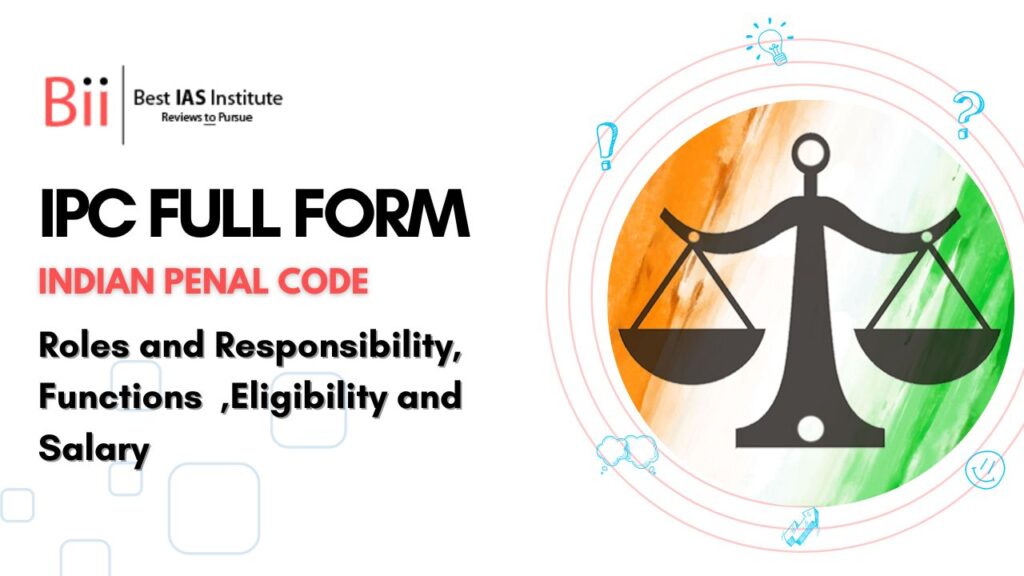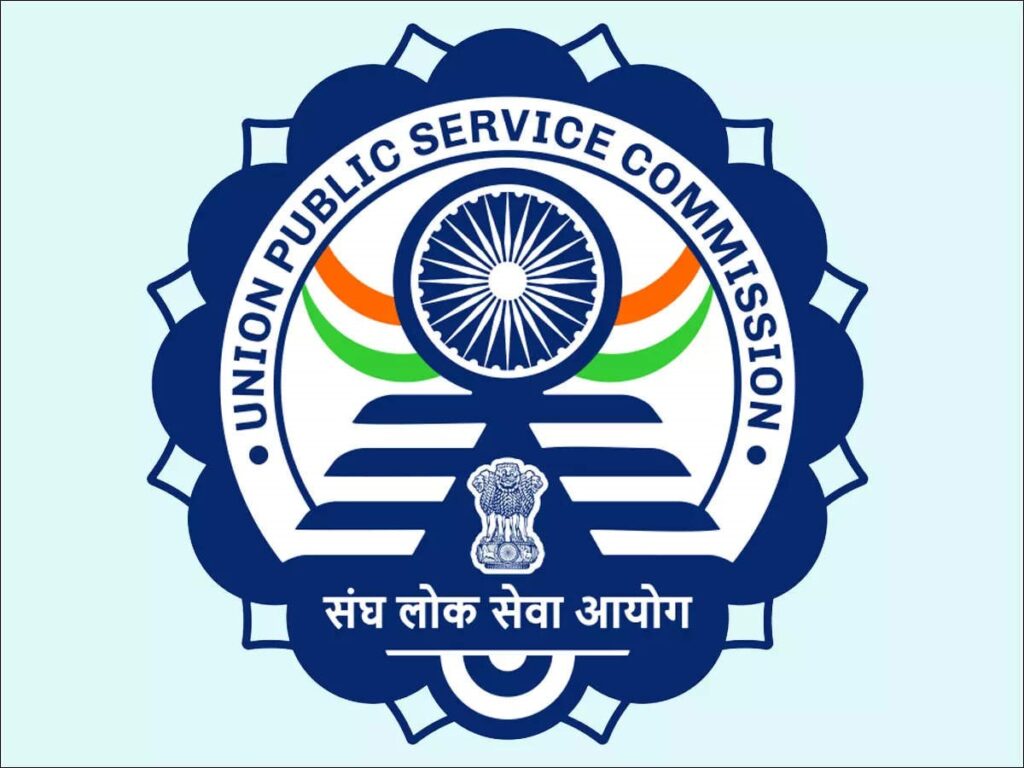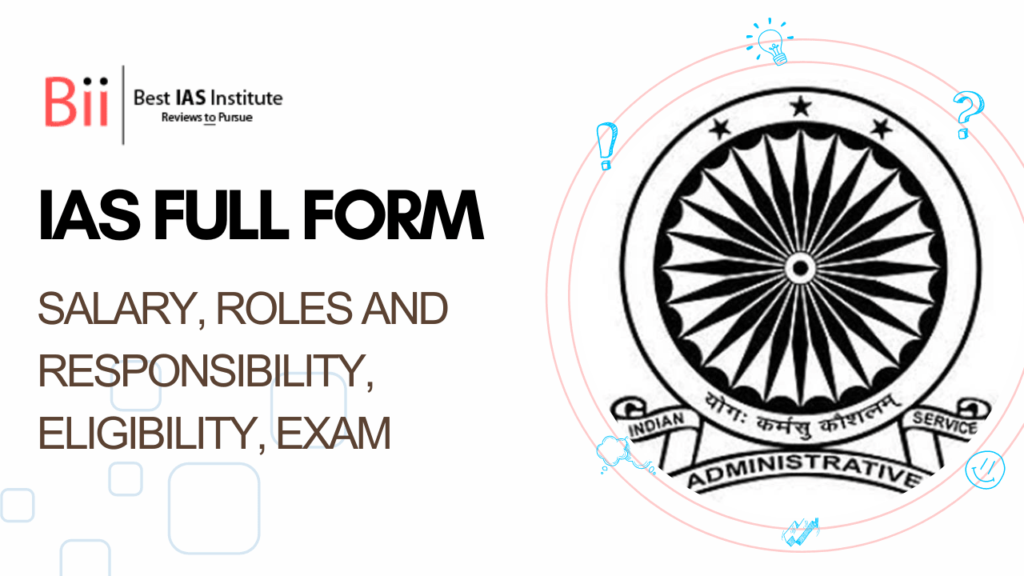What is IPC Full Form?

IPC full form representing Indian Penal Code and it defines the National Crimes. The Indian Penal Code (IPC) is crucial to the Indian law system. Criminal justice is based on the Indian Penal Code which ensures consistency in punishment. IPC also establishes the laws, procedures, and punishments to maintain the order, protect rights, and promote justice. The IPC defines crimes, classifications, and punishments. The Indian Penal Code (IPC) also prescribes how offenders are investigated, tried, and punished, ensuring India’s law and order, individual rights, and justice with law.
Meaning of IPC
The Indian Penal Code (IPC) serves as the fundamental legal framework in India for criminal liability related to specified offences and setting exceptions to criminal liability for these offences and IPC or Indian Penal Code has a comprehensive set of laws addressing all substantive aspects of criminal law, responsibilities, crimes, and punishments. Substantive Criminal Law, within the Indian Penal Code (IPC), the meaning of crimes like Robbery, Assault, and Murder these crimes and the corresponding penalties in the Indian law system.
Structure and Provisions of the IPC
The Indian Penal Code (IPC) specifies and punishes particular offences in its many parts and It is broken into 23 chapters with 511 parts respectively. The Indian Penal Code (IPC) can also broadly be classified into four categories given below:
- Chapters I from V – It deals with general matters relating to the definitions, meanings, principles of liability, etc.
- Chapters VI from XV– It deals with public matters between individuals and the state.
- Chapters XVI from XXII– They are primarily concerned with criminal offences committed by individuals against individuals or legal entities other than the state.
- Chapter XXIII – It is established with the principles of punishment for attempting to commit an offence where no specific provision has been made through this chapter.
IPC Sections of Indian Penal Code (IPC)
The Indian Penal Code (IPC) in 1860 with Sections 1 to 511 of total 511 sections in 23 chapters given below;
| IPC Sections of Indian Penal Code (IPC) | |
| IPC Sections List | Details |
| Section 1 | Title and extent of operation of the Code |
| Section 2 | Punishment of offenses committed within India |
| Section 3 | Punishment of offenses committed beyond but which by law may be tried within India |
| Section 4 | Extension of Code to extra-territorial offenses |
| Section 8 | Gender |
| Section 11 | Person |
| Sections 19 to 26 | Dishonestly, Fraudulently andReason to believe |
| Section 34 | Acts of common intention |
| Section 35 | Criminal knowledge or intention |
| Section 36 | Effect is caused by act and partly by omission in 36 section |
| Section 37 | Cooperation by doing one of several acts in constitution |
| Section 38 | People who are concerned about criminal acts may be guilty of different guilts. |
| Section 39 | “Voluntarily” |
| Section 40 | “Offense” |
| Section 52 | “Good faith” |
| Section 52A | “Harbour” |
| Section 53 | Punishment |
| Section 73 | Solitary confinement |
| Section 74 | Limit of solitary confinement |
| Sections 76 to 106 | CHAPTER IV (76-106) – General Exceptions |
| Sections 107 to 120 | CHAPTER V (107-120) – Abetment |
| Section 120A | Definition of criminal conspiracy |
| Section 120B | Punishment of criminal conspiracy |
| Section 121 | Attempting to war against the Government |
| Section 124A | Sedition |
| Section 141 | Unlawful assembly |
| Section 142 | Being a member of unlawful assembly |
| Section 143 | Punishment |
| Section 144 | Joining unlawful assembly armed with a deadly weapon |
| Section 145 | Continuing with unlawful assembly in knowing it has been commanded |
| Section 146 | Rioting |
| Section 147 | Punishment for rioting |
| Section 148 | Rioting, armed with deadly weapons |
| Section 149 | Every member of unlawful assembly guilty of the offense committed in prosecution of the common object |
| Section 159 | Affray. (6 Differences between Rioting and Affray) |
| Section 179 | Refused to answer a public servant to their questions |
| Section 182 | Wrong information with intention to cause a public servant to use his lawful power to the injury |
| Section 191 | Giving false evidence |
| Section 268 | Public nuisance |
| Section 292 | Sale, etc. of obscene books, etc |
| Section 293 | Sale, etc., of obscene objects to young people |
| Section 294 | Obscene acts and songs |
| Section 295 | Injuring a place of worship with intent to insult the any religion |
| Section 295A | Religious feelings of any class by insulting its religion |
| Section 296 | Disturbing religious assembly |
| Section 299 | Culpable homicide to Attempt to suicide |
| Section 319 -338 | Personal safety of other people |
| Section 339 | Wrongful restraint |
| Section 340 | Wrongful confinement |
| Section 349 | Force |
| Section 350 | Criminal force |
| Section 351 | Assault |
| Section 354 | Criminal force to woman/girl with intent to outrage |
| Section 354A | Sexual harassment and punishment for sexual harassment |
| Section 354B | Criminal force on a woman with intent |
| Section 354C | Voyeurism |
| Section 354D | Stalking |
| Section 359 | Kidnapping |
| Section 360 | Kidnapping from India |
| Section 361 | Kidnapping from lawful guardianship |
| Section 362 | Abduction |
| Section 375 | Rape |
| Section 376 | Punishment for rape |
| Section 376D | Gang rape |
| Section 376 DA | Gang rape on women under sixteen years of age. |
| Section 376 DB | Gang Rape on women under 12 years of age |
| Section 376 E | Punishment for repeat offenders |
| Section 377 | Unnatural offenses |
| Section 378 | Theft |
| Section 383 | Extortion |
| Section 390 | Robbery |
| Section 391 | Dacoity |
| Section 396 | Dacoity with murder |
| Section 399 | Making preparation to commit dacoity |
| Section 403 | Dishonest misappropriation of property |
| Section 405 | Criminal breach of trust |
| Section 410 | Stolen Property |
| Section 413 | Habitually dealing in stolen property |
| Section 414 | Assisting in the concealment of stolen property |
| Section 415 | Cheating |
| Section 420 | Cheating and dishonestly inducing delivery of property |
| Section 425 | Mischief |
| Section 441 | Criminal Trespass the House-breaking by night |
| Section 493 | Cohabitation caused by a man deceitfully inducing a belief of lawful marriage |
| Section 494 | Marrying again during the lifetime of husband or wife |
| Section 495 | Same offense with concealment of former marriage from person with whom subsequent marriage is contracted |
| Section 496 | Marriage ceremony was fraudulently gone through without lawful marriage |
| Section 497 | Adultery |
| Section 498 | Criminal intent a married woman |
| Section 498A | Cruelty by husband or relatives of the husband |
| Section 499 | Defamation |
| Section 503 | Criminal intimidation |
| Section 506 | Punishment for criminal intimidation |
| Section 509 | Word, gesture, or act intended to insult the modesty of a woman |
| Section 511 | Attempts to commit offenses |
Amendments to IPC
Some notable amendments to the IPC include:
- Criminal Law Amendment Act of 2013: The amendment was introduced in response to the protests following the Nirbhaya case and a high-profile gang rape incident happened in Delhi.
- Criminal Law Amendment Act of 2018: The amendment is focused on crimes against kids, specifically addressing issues related to child sexual abuse and related field.
- Criminal Law Amendment Act of 2019: This amendment expanded the scope of the IPC to include offences related to lynching, mob violence, and vigilantism.
Difference between IPC and CrPC
| CrPC | IPC |
| The Criminal Procedure Code is a procedural law, | The Indian Penal Code is a substantive law. |
| The Criminal Procedure Code outlines the steps the police must follow to investigate any infraction once a crime has been committed that is covered by the penal laws. | The Indian Penal Code (IPC) lists several offences it divides them into various groups.The Indian Penal Code specifies the penalties and punishments for the various offences. |
| The Code is to provide legally binding rules that must be followed with conducting a criminal offence. | The Code was created to serve as the nation’s primary penal code for punishing criminals and other crime people. |
Conclusion
IPC full form is Indian Penal Code, it has started a new chapter in the Indian legal system and It has provided the foundation for all types of legal. The Code is a comprehensive code that addresses nearly every substantive aspect of criminal law. They are divided into four sections and contain 23 chapters and 511 sections in the system. The Indian Penal Code (IPC) is essential to law and order and It defines offences with a set of penalties for various crimes. The IPC is crucial to India’s legal framework and justice, despite criticism and challenges like outdated provisions, and enforcement issues which clarifies offences, classifications, and punishments. In this article ,we have discussed about Indian Penal code (IPC) full form and other information.
Also Read:



